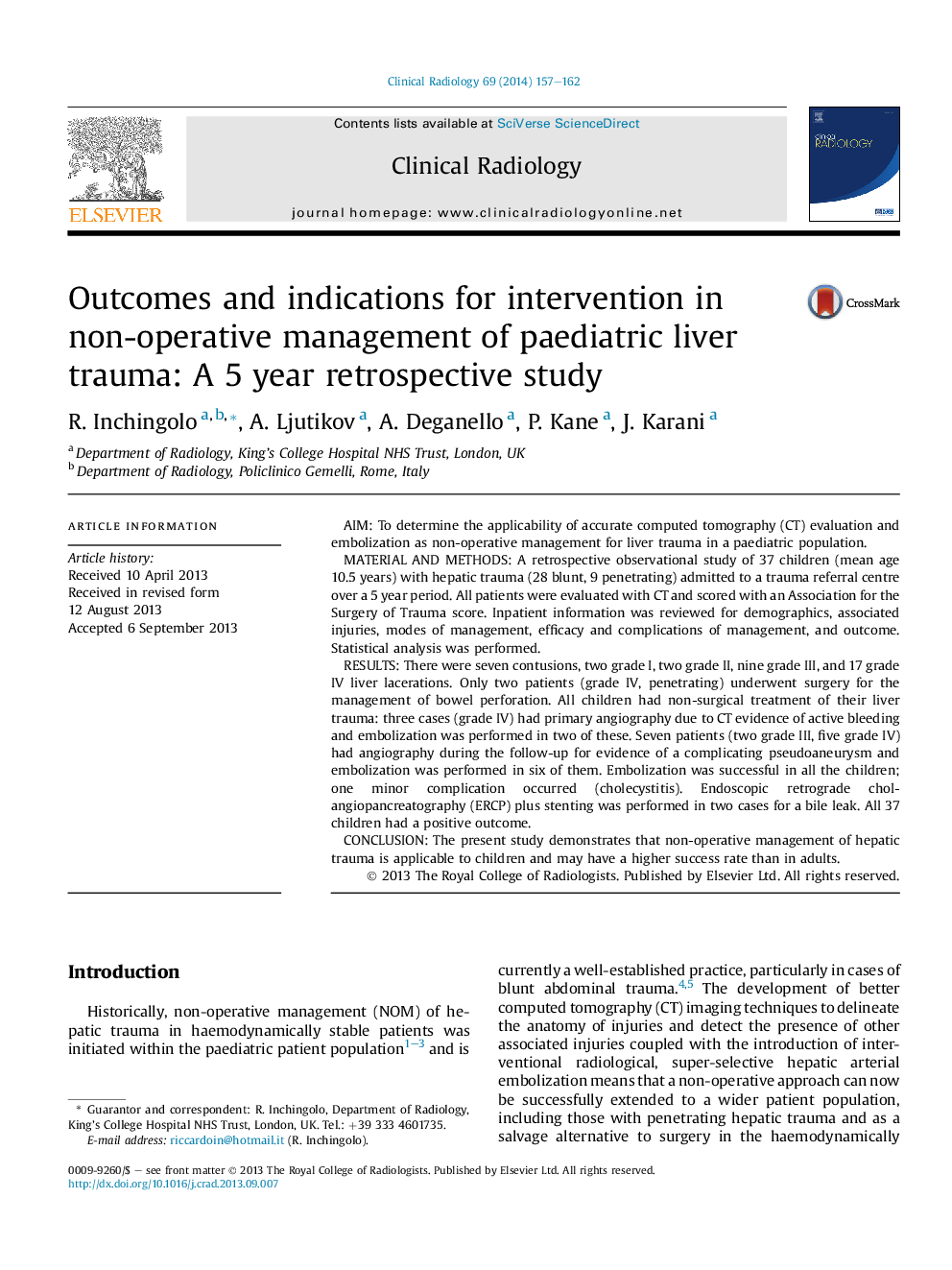| Article ID | Journal | Published Year | Pages | File Type |
|---|---|---|---|---|
| 3981477 | Clinical Radiology | 2014 | 6 Pages |
AimTo determine the applicability of accurate computed tomography (CT) evaluation and embolization as non-operative management for liver trauma in a paediatric population.Material and methodsA retrospective observational study of 37 children (mean age 10.5 years) with hepatic trauma (28 blunt, 9 penetrating) admitted to a trauma referral centre over a 5 year period. All patients were evaluated with CT and scored with an Association for the Surgery of Trauma score. Inpatient information was reviewed for demographics, associated injuries, modes of management, efficacy and complications of management, and outcome. Statistical analysis was performed.ResultsThere were seven contusions, two grade I, two grade II, nine grade III, and 17 grade IV liver lacerations. Only two patients (grade IV, penetrating) underwent surgery for the management of bowel perforation. All children had non-surgical treatment of their liver trauma: three cases (grade IV) had primary angiography due to CT evidence of active bleeding and embolization was performed in two of these. Seven patients (two grade III, five grade IV) had angiography during the follow-up for evidence of a complicating pseudoaneurysm and embolization was performed in six of them. Embolization was successful in all the children; one minor complication occurred (cholecystitis). Endoscopic retrograde cholangiopancreatography (ERCP) plus stenting was performed in two cases for a bile leak. All 37 children had a positive outcome.ConclusionThe present study demonstrates that non-operative management of hepatic trauma is applicable to children and may have a higher success rate than in adults.
